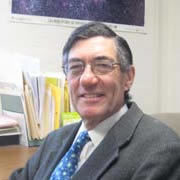
Professor John LoSecco has been part of an international team on the Double Chooz experiment in France for five years, including three as software director. The experiment, aimed at better understanding fundamental properties of particles called neutrinos, recently started collecting data with its detector. The detector is slightly more than 1 kilometer away from two of the largest nuclear reactors in the world, near the France-Belgium border, and records data on neutrinos that escape from the reactor.
LoSecco’s role involves software that converts digital records of the data into physical information. The task involves calibrating the equipment, running simulation experiments, and reconstructing the raw information into useful quantities, such as time, energy deposited, and activity in other parts of the detector. He coordinated the work of researchers in eight countries, including Russia, France, Germany and Spain, part of the broad collaboration that involves 14 U.S. institutions.
Neutrinos are fundamental particles, but not protons, electrons or neutrons, that are the byproduct of fusion in the sun and fission in power plants. One aspect of the research involves whether analysis of escaping neutrinos can reveal whether the reactors are using weapons-grade material. More fundamentally, researchers want to understand the time-dependence of neutrinos so they can establish physical parameters for the particles. “The neutrinos will change with time,” LoSecco says. “Neutrinos can’t be trapped. The only way to look at their time evolution is to go far away from them. The neutrinos age as they come to our detector.”